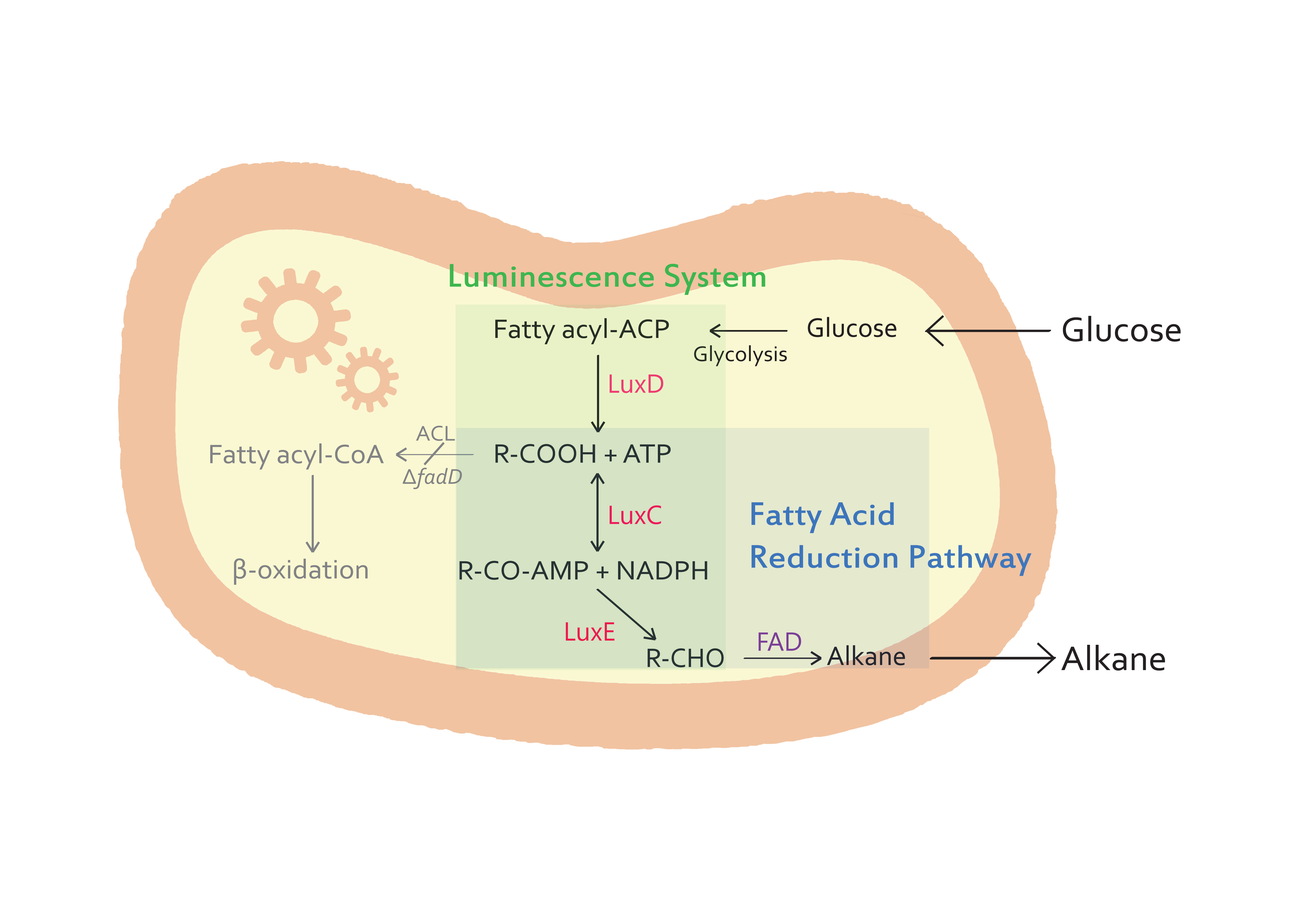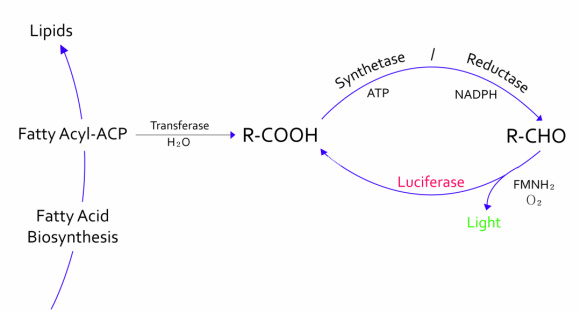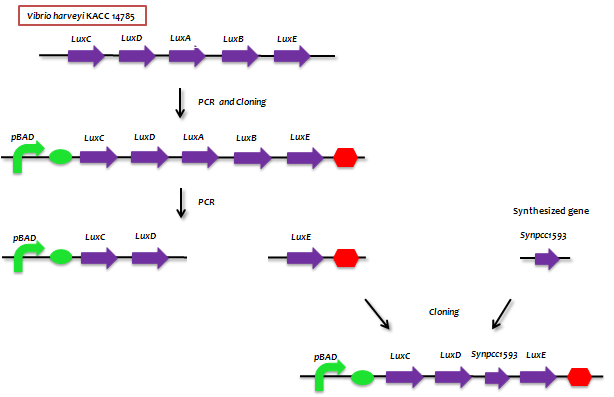Team:Korea U Seoul/Project/Design
From 2011.igem.org
(Difference between revisions)
| Line 16: | Line 16: | ||
[[File:arrows.jpg|thumb|Manipulation of Lux genes|500px|center]] | [[File:arrows.jpg|thumb|Manipulation of Lux genes|500px|center]] | ||
| + | |||
| + | {{:Team:Korea_U_Seoul/template/bottom_page}} | ||
Revision as of 15:34, 4 October 2011
Project Design
- E.coli K27 strains
- - The purpose of our team is to synthesize alkanes from microorganisms. E.coli K27 is a suitable host for the production of alkanes because it is a FadD mutant(△fadD).
- - In our step of alkanes synthesis, the fatty acids are important intermediates. Commonly, E.coli cells contain a single acyl-CoA synthetase, which activates the conversion of free fatty acid to acyl-CoA thioester. However, E.coli K27, a FadD mutant, lacks acyl-CoA synthetase activity, which prevents substrate or product degradation by the host. So, E.coli K27 accumulates fatty acids inside the cell, and finally we can get more alkanes than other E.coli strains.
- Two-carbon compounds and fatty acids as carbon sources
- Lux genes
- - The genes from bioluminescence operons have been identified, and we use some structural genes (luxC, D, and E genes). They code for the polypeptides of the fatty acid reductase system responsible for synthesis of the fatty aldehyde substrate.
- - Above is a list of Lux genes we utilized and brief explanation regarding them. Their functions are briefly explained, and it pretty much sums up how we used them.
Contact : |
synbiogroup@googlegroups.com |
 |
|
|
|
 "
"



